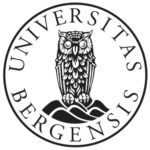 My approach to research is based on the foundation that it is an imperative to bring disciplines together and challenge status qua to not only make scientific evolution, but revolutionise our state of scientific understanding. To make scientific progress, we as a community therefore need to think across disciplinary borders and not simply ask what we can measure and model, but what we need to measure and model. For example, the use of coupled Earth-Systems models combined with water isotope observations now allow for the potential of improving our understanding of the link between meteorological processes, weather systems, and climate variations. Thanks to the different molecular structure of the water stable isotopologues, the water isotopic composition allows us to follow the water isotope fingerprint through exchange and mixing processes in the atmosphere both in the model and in-situ. We can therefore test if processes are accurately represented in models or if “the model is right for the wrong reason”.
My approach to research is based on the foundation that it is an imperative to bring disciplines together and challenge status qua to not only make scientific evolution, but revolutionise our state of scientific understanding. To make scientific progress, we as a community therefore need to think across disciplinary borders and not simply ask what we can measure and model, but what we need to measure and model. For example, the use of coupled Earth-Systems models combined with water isotope observations now allow for the potential of improving our understanding of the link between meteorological processes, weather systems, and climate variations. Thanks to the different molecular structure of the water stable isotopologues, the water isotopic composition allows us to follow the water isotope fingerprint through exchange and mixing processes in the atmosphere both in the model and in-situ. We can therefore test if processes are accurately represented in models or if “the model is right for the wrong reason”.
My current research is focused on the goal of developing leading expertise on understanding physical processes of the hydrological cycle in the Earth system and its representation in numerical models and to place the current climate changes into a paleo-climate perspective. This research is supported by my European Research Council Starting Grant (SNOWISO) focused on snow-atmosphere interactions using water stable isotope measurements. Additionally, my just funded Norwegian Research Council project (iTRANSFER) supports that avenue by focusing on accurately quantifying water isotope transfer rates during phase changes. These two basic research projects are major building blocks for the robust use of water stable isotopes as independent tracers in models ranging from conceptual to fully coupled climate models.



